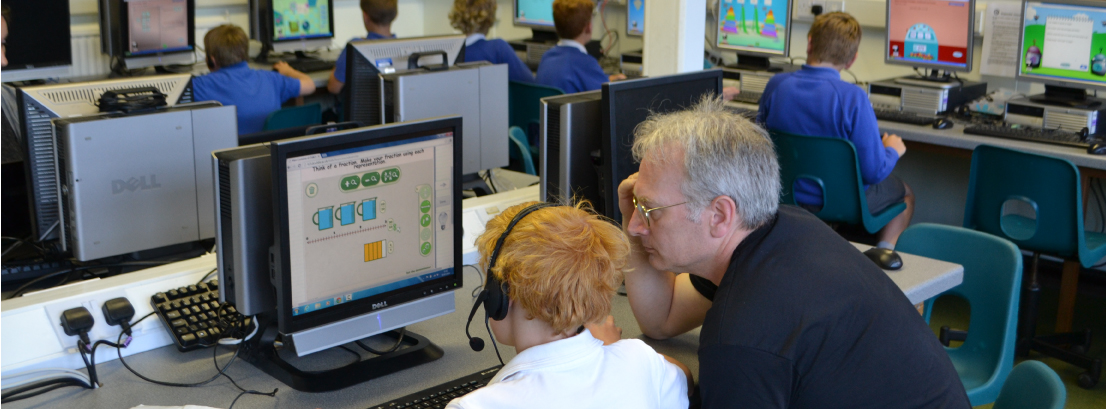
Case Studies
How are you using Fractions Lab in your classroom? If you would like to share what you have been doing with other teachers around the world, or if you would just like to know a little more, then please contact us as [email protected]
Jonathan
In this case study, Jonathan shares his work with a group of four 9-11 year old students learning about adding fractions with unlike denominators and reflects upon how Fractions Lab supported the students’ understanding.
My name is Jonathan and I work at Moorside Primary School in Lancaster, England. I have been using Fractions Lab with my Year 5 class and I’d like to share with you one short session I taught. We had previously used Fractions Lab for a couple of lessons to think about equivalent fractions and I was moving on to looking at adding and subtracting fractions.
Who was involved and what tasks did they use?
During this lesson spent 10 minutes with four pupils: they were competent adding and subtracting fractions with like denominators but had not been introduced to adding fractions beyond those with like denominators.
I asked the children, to carry out three tasks:
1. Add 3/7 and 1/7
2. Add 3/7 and 3/14
3. Add 3/7 and 1/3
Task 1 uses fractions with the same denominators; task 2 uses a 14, a multiple of 7; task 3 uses unlike denominators.
Why these tasks?
I selected these questions taking into account the increasing difficulty of the tasks and the tools in Fractions Lab. I hoped that the children would begin to make links between the visual representations on the screen and more formal procedures.
What did the students learn?
The third task I made a little bit more difficult because they had to find equivalents not just one of the fractions but both of them: 3/7 and 1/3. We looked at how it isn’t possible to convert 3rds into 7ths as they had done in the previous task and so how could they convert them in order for Fractions Lab to add them? I could see that once they had got the idea of converting into 21sts, they took off and started partitioning the representations and very quickly worked it out and understood it. I then left them to make up their own tasks for each other, using fractions with unlike denominators.
What are the next steps?
I have no doubt that the students would not have been able to do that activity without Fractions Lab. They wouldn’t have been able to work out the answer to the third question themselves. I think having the visual representation where Fractions Lab finds equivalent fractions, they are in the perfect place for me to follow up and to teach them about uncommon denominators and how to find common denominators using a more formal approach, using this Fractions Lab task as a basis for our discussion.
How did Fractions Lab help?
It was fabulous to see the children's understanding and the representations on Fractions Lab to guide them in their thinking. I think the visual representations in Fractions Lab allowed all the pupils to freely understand what was happening and why. I think unless they have that understanding, showing pupils how to convert common denominators can be quite abstract and procedural, rather than really embedding understanding.





